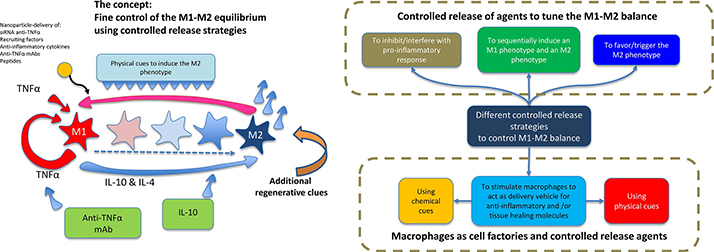Recent publications
2022
2021
2020
- Protein identification by 3D OrbiSIMS to facilitate in situ imaging and depth profiling, Nature Communications, 2020; 11, 5832
- All surfaces are not equal in contact transmission of SARS-CoV-2 Matter, 2020
- Developing immune-regulatory materials using immobilized monosaccharides with immune-instructive properties Materials Today Bio, 2020; 100080
- Polymer microarrays rapidly identify competitive adsorbents of virus-like particles (VLPs) Biointerphases, 2020
- Designing topographically textured microparticles for induction and modulation of osteogenesis in mesenchymal stem cell engineering Biomaterials, 2020; 120450
- Effects of Polymer 3D Architecture, Size, and Chemistry on Biological Transport and Drug Delivery In Vitro and in Orthotopic Triple Negative Breast Cancer Models Advance Healthcare Materials, 2020; 2000892
- Synthesis of Passerini‐3CR Polymers and Assembly into Cytocompatible Polymersomes Macromolecular Rapid Communications, 2020; 2000321
- Discovery of hemocompatible bacterial biofilm-resistant copolymers Biomaterials, 2020; 260: 120312
- Achieving Microparticles with Cell‐Instructive Surface Chemistry by Using Tunable Co‐Polymer Surfactants Advanced Functional Materials, 2020; 2001821
- Discovery of (meth)acrylate polymers that resist colonization by fungi associated with pathogenesis and biodeterioration Science Advances, 2020; 6 (23): eaba6574
- Immune Modulation by Design: Using Topography to Control Human Monocyte Attachment and Macrophage Differentiation Advanced Science, 2020; 7 (11): 1903392
- Immune-Instructive Polymers Control Macrophage Phenotype and Modulate the Foreign Body Response In Vivo Matter, 2020; 2 (6): 1564-1581
- Evolutionary design of optimal surface topographies for biomaterials BioRxiv, 2020; May (30):
- Real time monitoring of biofilm formation on coated medical devices for the reduction and interception of bacterial infections Biomaterials Science, 2020; 8: 1464
- A composite Gelatin/hyaluronic acid hydrogel as an ECM mimic for developing mesenchymal stem cell-derived epithelial tissue patches Journal of Tissue Engineering and Regenerative Medicine, 2020; 14 (1): 45-57
- Metabolic characterisation of THP-1 macrophage polarisation using LC-MS-based metabolite profiling Metabolomics, 2020; 16 (3): 33
- Facile Dye-Initiated Polymerization of Lactide-Glycolide Generates Highly Fluorescent Poly(lactic-co-glycolic Acid) for Enhanced Characterization of Cellular Delivery ACS Macro Letters, 2020; 9 (3): 431-437
- Simultaneous tracking of Pseudomonas aeruginosa motility in liquid and at the solid-liquid interface reveals differential roles for the flagellar stators Msystems, 2019; 4(5): e00390-19
- Wireless Nanobioelectronics for Electrical Intracellular Sensing ACS Applied Nano Materials, 2019; 2 (10): 6397–6408
Selected Publications

Delivery strategies to control inflammatory response: Modulating M1-M2 polarization in tissue engineering applications.
Alvarez MM, Liu JC, Trujillo-de Santiago G, Cha BH, Vishwakarma A, Ghaemmaghami AM, Khademhosseini A. J Controlled Release. 2016 Oct 28;240:349-363. doi: 10.1016/ j.jconrel.2016.01.026.
The impact of surface chemistry modification on macrophage polarization
Rostam HM, Singh S, Salazar F, Magennis P, Hook A, Singh T, Vrana NE, Alexander MR, Ghaemmaghami AM. Immunobiology. 2016 Nov;221(11):1237-46. doi: 10.1016/j.imbio.2016.06.010.
Phagocytic activity of monocytes cultured on O2-PS40 and PS surfaces for 6 days. On Day 6 of culture, monocyte-derived macrophages on (A) O2-PS40 and (B) PS were treated with Alexa Fluor 488-labelled zymosan particles for 30 min at 37 ◦C, 5% CO2. Data shown are representative of 3 independent experiments.
Immunomodulation with Self-Crosslinked Polyelectrolyte Multilayer-Based Coatings.
Knopf-Marques H, Singh S, Htwe SS, Wolfova L, Buffa R, Bacharouche J, Francius G, Voegel JC, Schaaf P, Ghaemmaghami AM, Vrana NE, Lavalle P. Biomacromolecules. 2016 Jun 13;17(6):2189-98. doi: 10.1021/ acs.biomac.6b00429.
Impact of surface chemistry and topography on the function of antigen presenting cells.
Rostam HM, Singh S, Vrana NE, Alexander MR, Ghaemmaghami AM. Biomaterials Sci. 2015 Mar;3(3):424-41. doi: 10.1039/c4bm00375f.
Different types of proteins adhere to biomaterials; β2 integrin from cells can mediate cell adherence at the biomaterial surface. IL-4 and IL-13 from mast cell and TH2 cell stimulate macrophage aggregation and FBGC formation, which secrete primary mediators for immune cells and fibroblasts, causing fibrogenesis and encapsulation of the implanted biomaterial.
Rostam HM, Singh S, Vrana NE, Alexander MR, and Ghaemmaghami AM Impact of surface chemistry and topography on the function of antigen presenting cells. Biomaterials Science 3, 424-441 (2015).
Passarelli MK, Newman CF, Marshall PS, West A, Gilmore IS, Bunch J, Alexander MR, and Dollery CT Single-Cell Analysis: Visualizing Pharmaceutical and Metabolite Uptake in Cells with Label-Free 3D Mass Spectrometry Imaging. Analytical Chemistry 87, 6696-6702 (2015).
Sanni O, Chang CY, Anderson DG, Langer R, Davies MC, Williams PM, Williams P, Alexander MR, and Hook AL Bacterial attachment to polymeric materials correlates with molecular flexibility and hydrophilicity. Advanced Healthcare Materials 4, 695-701 (2015).
Hook AL, Chang C, Yang J, Atkinson S, Langer R, Anderson DG, Davies MC, Williams P & Alexander MR Discovery of novel materials with broad resistance to bacterial attachment using combinatorial polymer microarrays. Advanced Materials 2013, 25, 2542-2547.
Hook AC C-Y, Yang J, Luckett J, Cockayne A, Atkinson S, Mei Y, Bayston R, Irvine D, Langer R, Anderson D, Williams P, Davies M & Alexander M Combinatorial discovery of polymers resistant to bacterial attachment. Nature Biotechnology 2012, 30(9), 868 - 875.